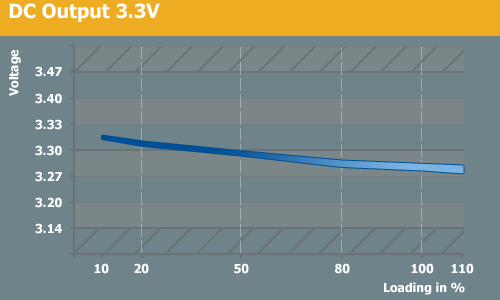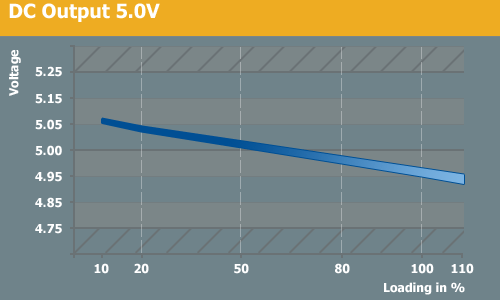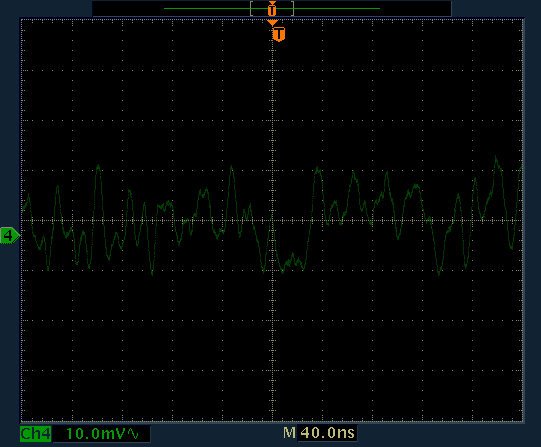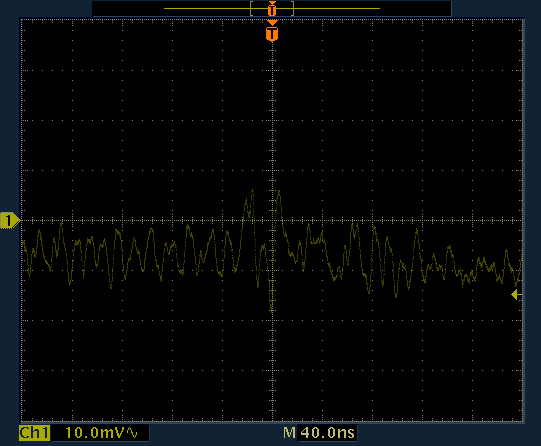Silverstone ST45NF Nightjar
by Christoph Katzer on August 25, 2008 1:00 AM EST- Posted in
- Cases/Cooling/PSUs
DC Output, Ripple, and Noise




The new Silverstone Nightjar really shows its potential in voltage regulation. Though we see 1.5% to 2.5% regulation with the lower voltage rails, the 12V rail is regulated to within a 1% margin, which is simply amazing for such a unit. Even at up to 50°C the voltage doesn't drop under 12.00V, making this a very stable unit.

3.3V rail max

5V rail max

12V rail max
Channel 3 represents the 3.3V rail, Channel 4 the 5V rail and Channel 1 12V. Ripple is quite high for the 3.3V rail as we measured 39.8mV, with 50mV allowed according to PSU ATX standards. The 5V rail show signs of even higher ripple as we see large spikes and the ripple is a little out of specs. At 31mV, the 12V rail does better and is well within specs.










20 Comments
View All Comments
TravisChen - Saturday, August 30, 2008 - link
Can you show us how to get test the output ripple & noise the right way (with the caps mentioned in spec)? I think it's an important part in PSU reviews.Christoph Katzer - Monday, August 25, 2008 - link
Actually that was just to take the screenshots... I still have pretty high spikes now and then even with the caps according to specs.tayhimself - Monday, August 25, 2008 - link
How does this address the point raised? And why are you taking pointless screenshots then?LTG - Monday, August 25, 2008 - link
Yes Tayhimself is right, Christoph you kind of avoided or skimped on a proper response to the questions raised.Authors replying in the comments is a major strength of AT - Please respect that.
So what was wrong, just your screen shots, or some of the testing reported originally as well?
Thank you.
Christoph Katzer - Tuesday, August 26, 2008 - link
I am still working on it to get the spikes sorted. With replying to that post I already meant to say that he was right and that his reply was much more helpful than most others that don't take the time to complete a full sentence... Once I sorted the spike-problem it will be all better.aarvark - Monday, August 25, 2008 - link
Really "of limited use"? A core duo with mid-range graphic card barely tops 150W these days. A basic setup, maybe with integrated graphics would be around 120W. 400W is more than plenty for 99%+ of the market. Remember, us geeks are the exception, not the rule.I'd say the one thing it wasn't suitable for were HTPCs whereby you'd be better off with a picopsu or the like as they are more efficient at very low loads and only $50. Better still by having an external brick most of the heat is outside the case.
Saying that I'm not a fan (no pun intended) of these because they are many, cheaper supplies that have a lazy 12 or 14cm thermally controlled fan which are for all real purposes silent anyway with the huge advantage of giving just a little case airflow through the case.
JarredWalton - Monday, August 25, 2008 - link
I think that last point is why we say "limited use". Basically, you need to want 200-300W of power (gotta leave some wiggle room, right?), and you need to want absolute silence, and you also need to be willing to pay $170+ for it. I'd take a 600W PSU with a large fan over this for under $100 as well. Pico PSUs are an option for small systems that don't require a lot of power, but there are many definitions of HTPC. Personally, I prefer larger systems with more storage options.Freddo - Monday, August 25, 2008 - link
Looks like something I would buy for my next computer :-)Clauzii - Monday, August 25, 2008 - link
The same here :)With specs and quality like that, it's almost impossible to go wrong with this. Also, the cablelengths COULD make it possible to let it rest outside the PC case itself (for DIYs anyway).
And thank You Anandtech, for testing a sub-500 Watt supply :)
pattycake0147 - Tuesday, August 26, 2008 - link
I agree not everybody wants kilowatt a psu a low wattage one like is an excellent change of pace and exactly what I am looking for.